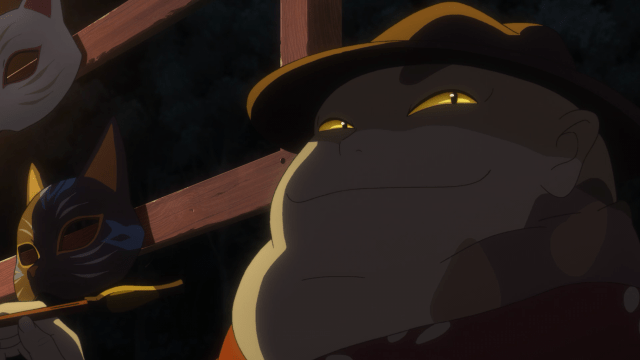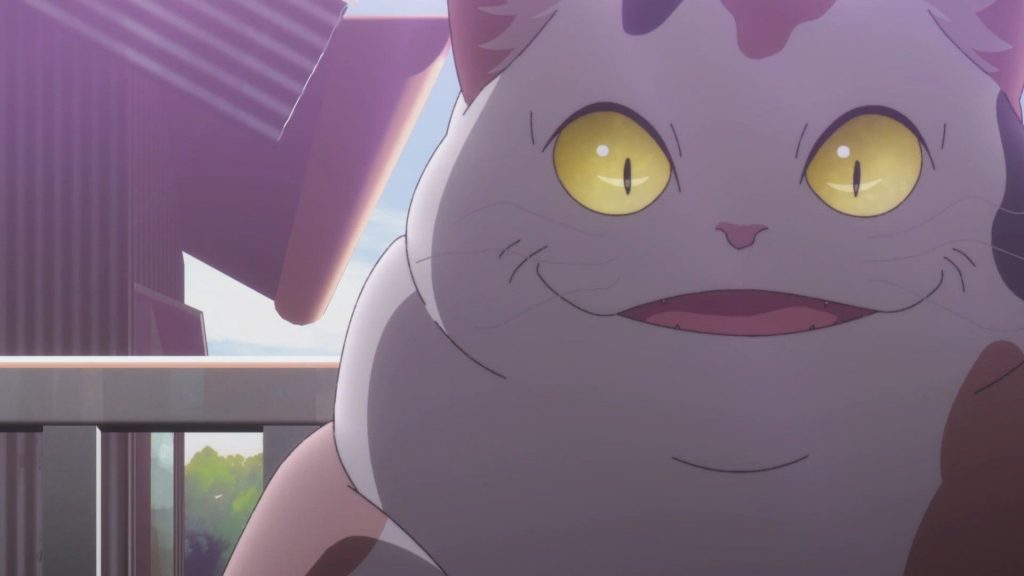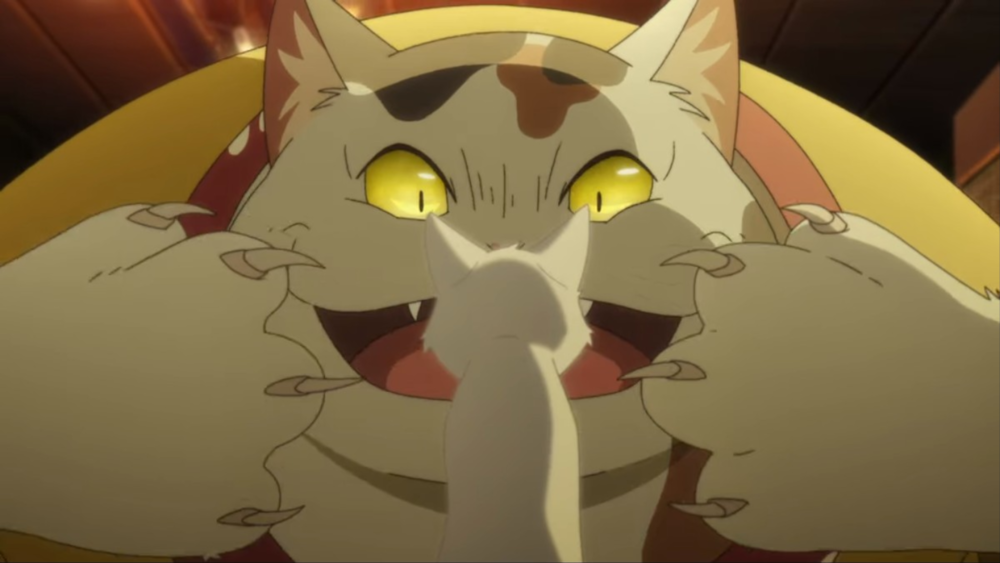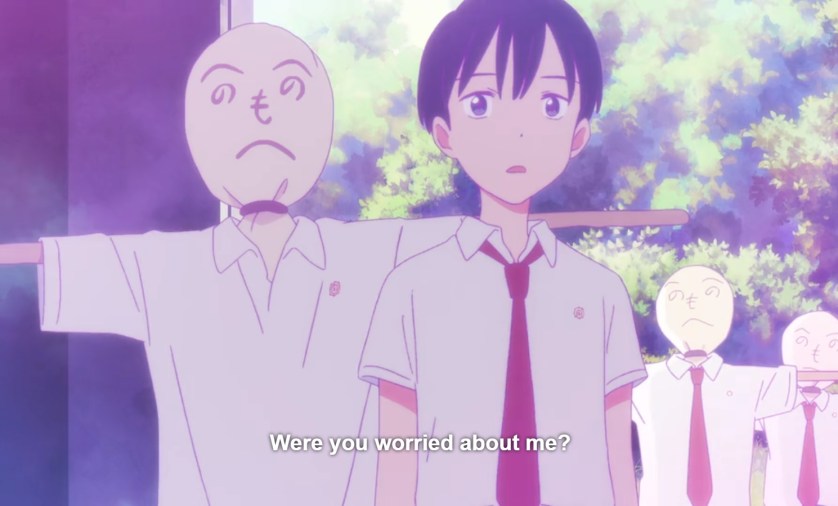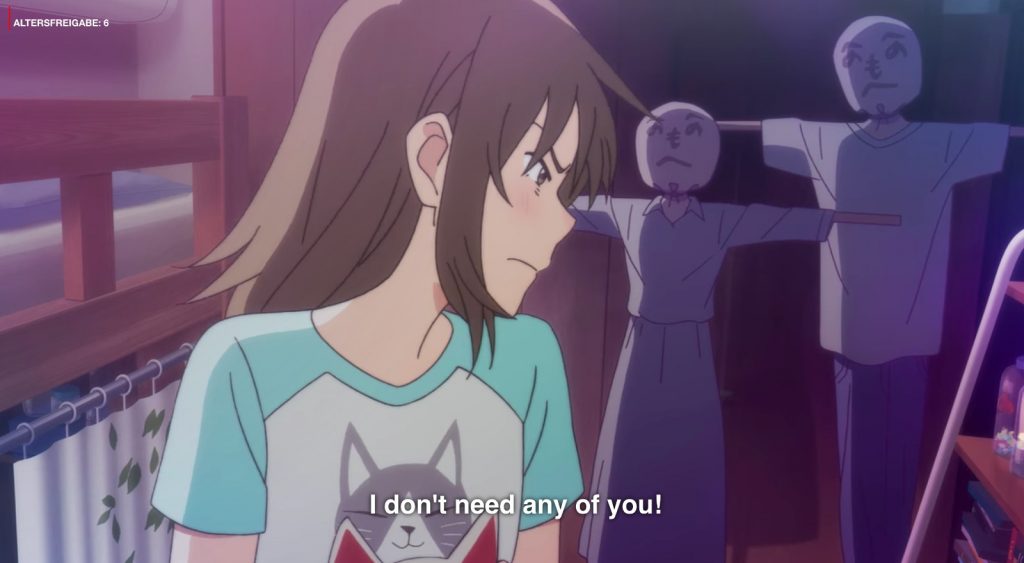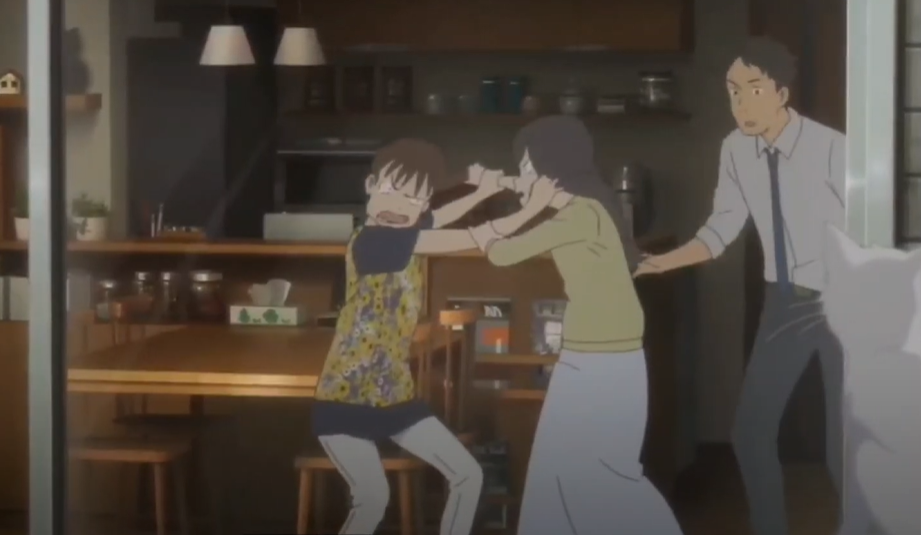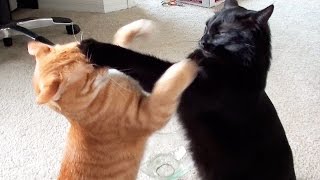In their 2020 film A Whisker Away, Junichi Sato and Tomotaka Shibayama explore the story of 14-year-old Miyo Sasaki, who transforms into a cat with the help of a Noh mask. Provided by a mysterious mask seller in a cat body, the mask enables Miyo to be close to her school crush, Hinode, who rejects her in her human form while keeping her close as a cat. Moreover, the ability to take on the physique of a cat provides Miyo with the possibility to escape her difficult life at home and her problematic relationships with her biological mother and stepmother. However, as a result of the increasing time Miyo spends in her cat body, the lines between her human and cat life get more and more blurry, compelling her to decide whether she wants to keep her human life or transform into a cat permanently.
Japanese Animation, also known as anime, allows the audience to move away from the literal and constraints of reality, while opening up possibilities of fantastical and ambiguous portrayals and meaning. Even in its early stages of being drawn, anime is “[…] always a step removed from the iconography of everyday life, offering a representation of reality, rather than its presentation […].”[1] It blurs the line between reality and fiction, truth and imagination to not only “[…] entertain audiences around the world on the most basic level, but […] move and provoke viewers on other levels as well, stimulating audiences to work through certain contemporary issues in ways older art forms cannot.”[2] The conceptual framework of Anime makes it possible for individual viewers of different age groups to either watch A Whisker Away as a light-hearted romantic adventure, or interpret it in terms of it’s much more sombre undertones of depression, suicide and the conflicting development of adolescent female sexuality. As is often seen in anime and its representation of animals, the cats featured in A Whisker Away may resemble naturalistic cats but are given symbolic meaning and anthropomorphic features. Cats and their animalistic dichotomy make up a crucial part in the film’s setup, message, and ambiguity.

The human-animal boundary featured in the movie separates humans on one side to cats on the other. Though both may share the same living environment in terms of being pets and owners, the difference in their ability to communicate renders them to lead separate lives in different spheres of reality. In the film, cats are given the ability to speak but only be understood by members of their own species, as is the same with humans; Miyo’s disappearing ability to comprehend human speech while being in her cat body emphasizes her fading grip on humanity while simultaneously turning more and more animalistic. When read as an analogy to death, the use of cats as a representation of the ‘other side’ or afterlife is used as a commentary on the almost ordinary perception of suicide in Japan. Because of the cat’s status as a popular choice for a pet, Sato and Shibayama show the proximity and trivialisation of suicide in Japanese society, which almost sees suicide as a tradition and an accepted act.[3] However, the portrayal of cats as the ‘other’ can also be interpreted as Miyo’s struggle with puberty and her developing sexuality. Because in “[…] the human mind, cats frequently have a feminine image”[4], Miyo’s shifts between her human and cat form represent an inner conflict between an attempt to hold onto childhood while simultaneously trying to come to terms with adolescence and emerging sexual urges. Just as the boundary between cats and humans is characterised by the inability of cats to speak to humans, female sexuality too is a tabooed subject, making it appear as an alienated and shameful thing, whose existence should be kept secret and not be talked about.
Though transformations are not explicitly restricted to one gender, the only successful human to cat transformations portrayed and discussed in the film are undergone by women. Miyo, as a 14-year-old schoolgirl, finds herself in a transactional period of her life – not only dealing with depression, she is simultaneously confronted with pubertal changes in her body, especially her developing sexuality. Throughout history, cats have been closely linked to women and femininity, connecting them “[…] through connotations of perverse or uninhibited sexuality and evil/death”[5], even so far as to believe that “[…] witches could turn into cats and cats could become witches.”[6] Undoubtedly, there is an element of the supernatural and sinister to the mask-seller who provides Miyo with the mask that enables her to transform into a cat. He presents her with a temporary fix for her pubertal problems, not disclosing the heavy prize she has to pay for it. Only ever appearing in the body of a cat and thus bereft of any trace of humanity, the character of the mask seller can be interpreted as the apparently dangerous and demonic lure of female sexuality. The more time Miyo spends in her cat body, the more her grip on reality and herself seems to fade, making her an even easier prey for the mask seller. Throughout the movie, there is a heavy emphasis on his eyes, underlining his dangerous nature as a predator (Figure 3,4 &5). “Cats eyes”, as Lawrence writes, “that glow in the dark may be interpreted as sources of beneficent spiritual light and wisdom, or mark the animals as demonic creatures in whose eyes one may glimpse the fires of hell.”[7] Whenever introduced, the mask sellers glistening eyes mark a stark contrast to the natural or darker colours of the background, making him appear even more otherworldly and sinister. As Miyo’s desire to stay in her human body grows weaker, the mask seller is able to persuade her to give into her animalistic side fully, thus separating herself from her identity and individuality. The price he demands for the simplicity of a cat life, for being cherished by the one person she wants to be loved by, is for Miyo to abandon who she truly is and what makes her into the person that she is. Thus, he demands her to kill her true self, surrendering her ‘life span’ to him.
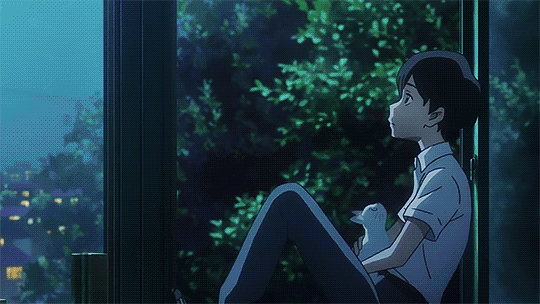
Miyo’s constant switching between her human and animal form symbolize the internal struggle many young girls her age face. On the one hand, she wants to hold onto her human form, the innocent and playful child she used to be while simultaneously having to come to terms with her becoming a woman, a being with sexual urges. Linked to femininity, cats have been associated with “[…] fertility and female sexuality”[8], their reproductive nature making them “[…] the embodiment of lust and sexual depravity.”[9] The connotation of female sexuality as an animalistic form of sexual degeneracy is hinted at when cat Miyo leaves the pottery and Hinode is told that “[…] she has plenty of homes to go back to.”[10] It appears that, once awakened in the female body, sexual urges turn girls into promiscuous beings, only guided by animalistic instincts. Miyo’s attempts to adjust to her developing sexuality have her not just embrace an animalistic side but turn into an animal herself as there is no possibility for her to openly experience her sexuality otherwise. Her infatuation with Hinode mirrors a common practice among adolescent girls, as they “[…] fall into ‘ideal’, or romanticised love with boys/men to fulfill their own sense of self-worth.”[11] Miyo’s idealisation of Hinode is shown throughout the movie by casting the background in pink tones whenever Miyo feels a surge of strong emotions in relation to Hinode or the escapism he represents, depicting the other people around as scarecrows (Figure 7). She tells herself that nobody besides Hinode truly understands her, thus leaving authentic relationships (with her parents and her friend Yori) behind in pursuit of an illusion. Instead of facing her problems at home with her parents and stepmother (Figure 8), Miyo choses the easier option: to silence how she truly feels, fleeing into a cat body and pushing away the people that truly care about her.
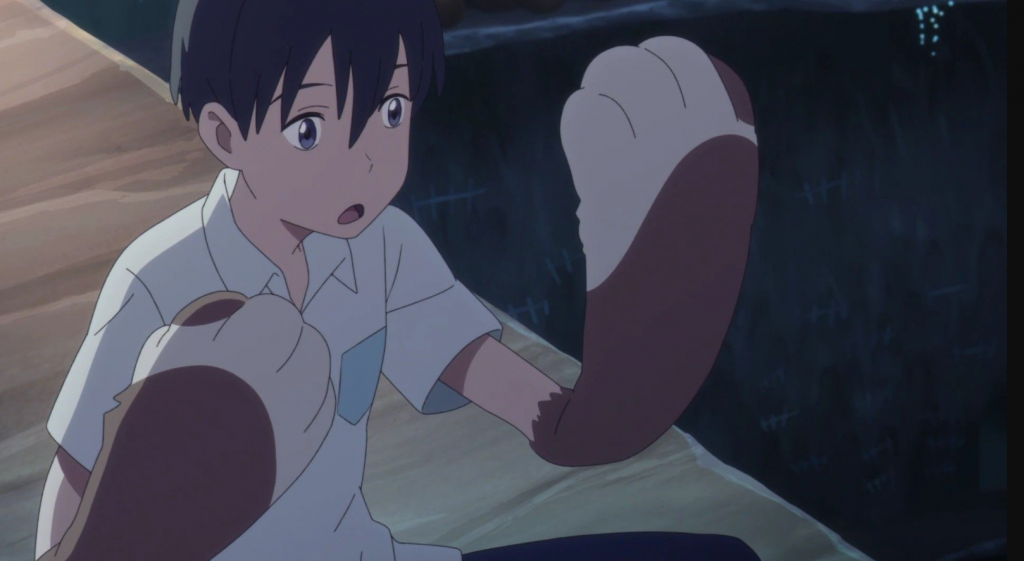
However, as Hinode rejects Miyo in real life, the only way she can be close to him is in the body of a cat. Miyo has to give up her identity and personality, reducing her living reality to the primitive and animalistic just to appeal to her love interest. Becoming a cat strips her of her human identity and the ability to express herself, her opinions. In contrast, when Hinode comes to terms with his feelings for Miyo and decides to help her, he is not able to successfully leave his human body behind. Instead of transforming into a cat fully, he only receives paws for hands (Figure 9). Because boys across different cultures are not socialised to regard their relationships with females as an ultimate goal, they tend to ground “[…] their sense of self-worth in activities and accomplishments […].”[12] As he can be sure of Miyo’s feelings toward him, there is no need for Hinode to leave his human body behind, to get rid of his personality and simplify the complexity of his character. Additionally, as he is not seen being sexually interested in any character throughout the film (except for realising his fondness of Miyo towards the end), it can be assumed that his puberty is not yet as advanced as Miyo’s, therefore he is not as much in touch with his sexuality, his animalistic side.
A Whisker Away has a heavy emphasis on its female characters, linking them with cats not just in terms of female sexuality. Central for Miyo’s depression are two female characters in mother roles – the biological mother who left her when she was young yet continues to put pressure on her, and her sweet-natured stepmother who tries to build a relationship with Miyo but is rejected by her. Additionally, Miyo was bullied in school by her other female classmates, leaving her with one girl friend overall. Deprived of a stable mother figure to idolize in a crucial time like adolescence only heightens the feeling of instability and estrangement Miyo feels throughout the movie, which eventually lead her to reject girlhood altogether, as well as the expectations and restrictions that come with it. Avoiding each other for most of the film, both women fight implicitly by putting pressure on Miyo: her biological mother pushes her to live with her, while her stepmother tries to get Miyo to confide in her. The tension between the two women comes to a high after Miyo disappears and both confront each other on who is to blame, which results in a fight between both women. As a fight between two women is often times referred to as a ‘cat fight’, a term which was originally used to describe a fight between two women over a shared male love interest[13], it is loaded with “[…] gender-stereotyped conceptions of women’s use of violence as being harmless and, in some cases, funny and entertaining.”[14]
Though the audience is experiencing a depiction of violence, the scene functions as comedic relief, which is highlighted by Miyo’s rather perplex reaction to watching it. It becomes apparent that the women’s primary concern is not Miyo’s wellbeing, but unresolved territorial issues regarding Miyo and her father. Seeing each other as enemies like two cats eyeing the same prey, their animalistic instincts take over rational thought in the heat of heightened emotions. Linked to each other by the same man, they see each other as competition rather than allies in finding Miyo, falling victim to their animalistic instincts. The portrayal of the fight, with Miyo’s father as the allegedly reasonable entity breaking up the fight, only emphasizes the notion of a cat fight (Figure 10 and 11).
As shown, A Whisker Away features heavy topics such as depression and suicide, as well as an emphasis on the struggles that puberty entails for young girls. The close link drawn between cats and girls/women highlights a metaphorical connotation of femininity and female sexuality to animality, as Miyo has to let go of her identity to fulfil her sexual urges. This is also taken on in the film in terms of the ambiguous, inimical relationships between female characters. The film comments on the dangers of minimising and compromising yourself just to be liked by others, as it equates losing individuality and identity to killing one’s true self.
References
[1]Denison, Rayna, Anime. A critical Introduction (London: 2015), p. 16.
[2]Napier, Susan J, Anime from Akira to Howl’s Moving Castle. Experiencing Contemporary Japanese Animation (New York: 2005), p. 4.
[3]Koo, Jahyeong, Cox, Michael, ‘An Economic Interpretation of Suicide Cycles in Japan’, in Contemporary Economic Policy, 26 no. 1 (2008), 162-174 (p. 162); Chen, Joe, Choi, Yun Jeong, Sawada, Yasuyuki, ‘How is suicide different in Japan?’, in Japan and the World Economy, 21 (2009), 140-150 (p. 140).
[4]Lawrence, Elisabeth Atwood, ‘Feline Fortunes: Contrasting Views of Cats in Popular Culture’, in Journal of Popular Culture, 36 no. 3 (2003), 623-635 (p. 623).
[5]Lecker, Michael, ‘Treacherous, Deviant, and Submissive: Female Sexuality Represented in the Character Catwoman’ (unpublished master’s thesis, Graduate College of Bowling Green State University, 2007), p. 18.
[6]Lawrence, Elisabeth Atwood, ‘Feline Fortunes’, p. 632.
[7]Lawrence, Elisabeth Atwood, ‘Feline Fortunes’, p. 633.
[8]Lawrence, Elisabeth Atwood, ‘Feline Fortunes’, p. 627.
[9]Lawrence, Elisabeth Atwood, ‘Feline Fortunes’, p. 633.
[10] A Whisker Away, dir. Junichi Sato & Tomotaka Shibayama (Studio Colorido, 2020).
[11]Abrams, Laura S., ‘Book Review: Puberty, Sexuality, and the Self: Girls and Boys at Adolescence’, review of Puberty, Sexuality, and the Self: Girls and Boys at Adolescence, by Karin Martin, in Child and Adolescent Social Work Journal, 19 no. 6 (2002), 487-490, p. 488.
[12]Abrams, Laura S., ‘Book Review: Puberty, Sexuality, and the Self’, p. 488.
[13] Schaefer, Kayleen, ‘Me-OW! It’s the End of the Catfight’, The New York Times, 24 April 2019 <https://www.nytimes.com/2019/04/24/style/is-the-word-catfight-sexist.html#:~:text=Catfight.,fighting%20over%20their%20shared%20husband.> [accessed 18 January 2021]
[14] Hassouneh, Dena, Glass, Nancy, ‘The Influence of Gender Role Stereotyping on Women’s Experiences of Female Same-Sex Intimate Partner Violence’, in Violence Against Women, 14 no. 3 (2008), 310-325 (p. 320).
Bibliography
Abrams, Laura S., ‘Book Review: Puberty, Sexuality, and the Self: Girls and Boys at Adolescence’, review of Puberty, Sexuality, and the Self: Girls and Boys at Adolescence, by Karin Martin, in Child and Adolescent Social Work Journal, 19 no. 6 (2002), 487-490
Chen, Joe, Choi, Yun Jeong, Sawada, Yasuyuki, ‘How is suicide different in Japan?’, in Japan and the World Economy, 21 (2009), 140-150
Denison, Rayna, Anime. A critical Introduction (London: 2015)
Hassouneh, Dena, Glass, Nancy, ‘The Influence of Gender Role Stereotyping on Women’s Experiences of Female Same-Sex Intimate Partner Violence’, in Violence Against Women, 14 no. 3 (2008), 310-325
Koo, Jahyeong, Cox, Michael, ‘An Economic Interpretation of Suicide Cycles in Japan’, in Contemporary Economic Policy, 26 no. 1 (2008), 162-174
Lawrence, Elisabeth Atwood, ‘Feline Fortunes: Contrasting Views of Cats in Popular Culture’, in Journal of Popular Culture, 36 no. 3 (2003), 623-635
Lecker, Michael, ‘Treacherous, Deviant, and Submissive: Female Sexuality Represented in the Character Catwoman’ (unpublished master’s thesis, Graduate College of Bowling Green State University, 2007)
Napier, Susan J, Anime from Akira to Howl’s Moving Castle. Experiencing Contemporary Japanese Animation (New York: 2005)
Schaefer, Kayleen, ‘Me-OW! It’s the End of the Catfight’, The New York Times, 24 April 2019 <https://www.nytimes.com/2019/04/24/style/is-the-word-catfight-sexist.html#:~:text=Catfight.,fighting%20over%20their%20shared%20husband.> [accessed 18 January 2021]
Filmography
A Whisker Away, dir. by Junichi Sato & Tomotaka Shibayama (Studio Colorido, 2020).
Further Reading
Greenwood, Forrest, ‘The Girl at the Center of the World: Gender, Genre, and Remediation in Bishōjo Media Works’, in Mechademia, 9 (2014), 237-252
Hollinger, Karen, ‘The Monster as Woman: Two Generations of Cat People’, in Film Criticism, 13 no. 2 (Winter 1989), 36-46
Kim, Kyu Hyun, ‘Girl (and Boy) Troubles in Animeland. Exploring Representations of Gender in Japanese Animation Films’, in Teaching About Asia Through Film, 7 no. 1 (Spring 2002), 38-46
Nikolajeva, Maria, ‘Devils, Demons, Familiars, Friends: Toward a Semiotics of Literary Cats’, in Marvels & Tales, 23 no. 2 (2009), 248-267
